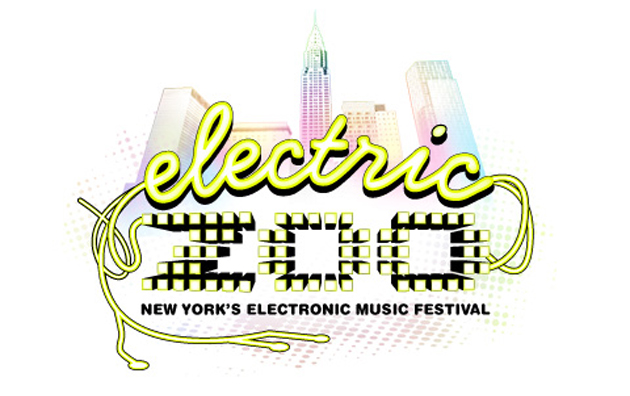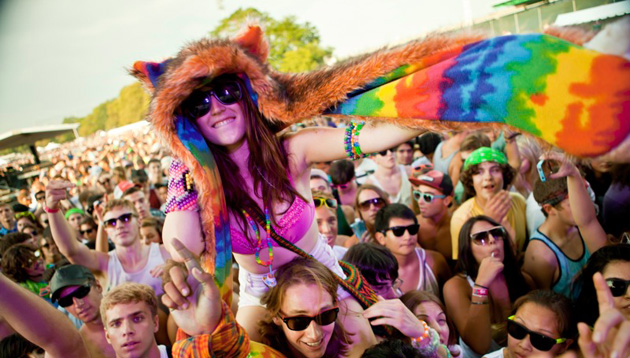By now, you’ve likely heard the report, either through a news program or Twitter feed: Two people died as a result of drug overdoses during the first two days of Electric Zoo, prompting the NYPD and Mayor Bloomberg to cancel the EDM festival’s final day.
Jeffrey Russ, 23, and Olivia Rotondo, 20, were taken to city hospitals after taking MDMA and died on Saturday, according to police reports. During the festival’s first two days, four others were treated for drug overdoses, 31 more arrested for drug-related charges, and a 16-year-old girl assaulted.
Almost immediately after the event, producers and DJs – from those scheduled to appear to those hearing the news for the first time – expressed condolences. Others, however, stated on Twitter that drugs aren’t a prerequisite to enjoying electronic dance music, or expressed disappointment that MDMA use is so prevalent and now destroying the scene.
But in spite of countless reports out there that MDMA (commonly known as “Molly”) is a new party drug gaining popularity at events and becoming more pervasive on college campuses, the fact is, ecstasy usage has been intertwined with electronic dance music since the ‘80s, be it at underground rave parties or New Order openly admitting to taking it while recording 1989 album Technique on Ibiza.
As YourEDM points out in its “Drug and Dance Music Culture” series (part 1 focuses on ecstasy), significant tenants of dance music culture, from PLUR to the lights and visuals now omnipresent at club and festival shows stem, in some shape or form, from drug usage – but not entirely. As such, even though this incident and others are tragic, addressing drug usage in the scene, no matter how large or small, isn’t as simple as telling concertgoers to put the Molly down and just dance.
Drug Use is Practically Expected
Before the 2013 Ultra Music Festival, the Miami Herald profiled the increased usage of Molly in the city’s clubs and at its annual EDM event. Confiscated drugs, the paper pointed out, rose from 207 instances in 2011 to 337 in 2012, but what sticks out from the piece is a quote from a city club promoter attending Ultra:

“If they are not on drugs, they are not having fun. You feel the music in your body. It’s like tickling in the inside and that’s what makes you smile. You smile and you don’t stop dancing.”
Tying into this is the lack of thorough searching common in reports about electronic music festivals and drug usage. A 2011 article on Borderzine.com, for instance, has one female attendee talking about holding MDMA pills in her hand as security let her through:
“They usually never pat me because most of the securities are men and I always wear a dress or something of that nature so I guess they are scared. Sometimes I’m holding the pill in my hand and they won’t even notice. They take one look at me and see that I’m wearing a dress and just let me in like nothing.”
Even at events associated with colleges, such as various campus tours DJs tend to do, the crowd obviously looks under the influence, as article “There’s Something About Molly” details.
But back in 2010 when a 15-year-old concertgoer died because of an ecstasy-related overdose at Electric Daisy Carnival, the Los Angeles Times highlighted the notion that the format of EDM events – and, really, music festivals in general – makes obtaining a hit just a flier, text, or a quick step away. “It’s very available and acceptable in that context, because there’s no grownups,” Dr. Karen Miotto, a clinical psychiatry professor at UCLA, told the newspaper three years ago. “This scale of young, vulnerable people is just a setup for drug dealers peddling marginal, bad, unsafe drugs.”
The combined result of these factors are multiple deaths and overdoses between these two, including two more at Electric Daisy Carnival in 2012 and the whole Paradiso Festival incident earlier in 2013. The fact remains, though, that in spite of cries for reform, for fans to be more careful, and for concertgoers to simply not show up at an EDM event looking for a high with some flashy lights and pulsating music, these types of instances still – and will – continue.
Safer Than Cocaine and Ecstasy?
In spite of these highly-publicized deaths and overdoses, one myth continues in mainstream EDM culture: Molly is safer to take than cocaine because it’s less additive and safer than ecstasy because it’s supposedly “pure.”
More and more concertgoers appear to believe this notion: According to a study conducted by the Drug Abuse Warning Network, emergency room visits related to MDMA consumption increased 123 percent from 2004 to 2009. In these cases, MDMA had been consumed alone, with other drugs, or with alcohol.

No matter if MDMA is consumed as ecstasy or in supposed “pure” form, it acts simultaneously like a stimulant and psychedelic. The brain, in response, receives a surge of serotonin, norepinephrine, and dopamine, creating that type of energetic and elated high so many may have at Ultra, EDC, or even a smaller club show.
Side effects, however, have potential to send the user to the emergency room: dehydration, elevated heart rates, seizures, coma, exhaustion, cardiac issues, significantly elevated body temperatures, and brain hemorrhages, in more extreme instances.
At the same time, the supposed pureness of Molly over ecstasy remains just that – a myth. In fact, CNN pointed out in an article, more and more confiscations show MDMA is really methylane, a.k.a. “bath salts.”
Blame the Music or the Drugs?
Media reports, slightly sensationalistic in nature, paint MDMA and electronic dance music as two concentric forces, one feeding off the other. But considering drug references in other musical genres (from rock to hip-hop to, more recently, Miley Cyrus’ trap-pop concoction “We Can’t Stop”), electronic dance music takes the brunt of the concern trolling.
An NPR piece deconstructs the media’s attitudes toward emerging subcultures and drug usage, detailing reporters covering Woodstock for TIME in the late ‘60s. As some news outlets angled their pieces toward the cooperative atmosphere, others had the tone of a shaming, confounded older adult.
Regardless of how you think of the music, whether you think the artists at Woodstock were “true” artists for playing guitars or consider them a bunch of hippy hacks pandering to a crowd of free-lovin’ drug users, EDM events in 2013 end up being a repeat scenario 40-plus years later.
But, if you think the rock music culture of the late ‘60s just transformed into mainstream EDM of 2013, down to attitudes, drug use, and atmosphere, think again. The fact is, drug use occurs at any type of music festival – regardless of whether you’ve got fun. or Avicii headlining.
Backing up this notion, The Guardian put out a report in 2012 about the types and quantities of drugs confiscated at 10 well-known music festivals that cover all genres from folk to heavy metal to dance. And – surprise, surprise – the genre really doesn’t matter; instead, the older the festival’s demographic skews, the lesser the drug usage. If that’s the case, maybe NYC should start banning events that cater to all under-40 crowds.
But when the NYPD and Mayor Bloomberg release a statement like, “The Electric Zoo organizers have worked with city officials to reduce health risks at this event, but in view of these occurrences, the safest course is to cancel the remaining day of the event,” it feels like a slap in the face to EDM fans and the people creating the music. The question remains, though, if Electric Zoo had been a rock or pop event, would the city still have shut or down? Or, would overdoses and arrests simply be associated with a few individuals causing a disruption rather than represent an entire subculture now entering the mainstream?




